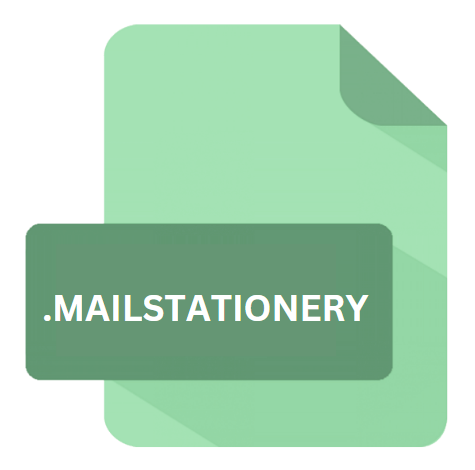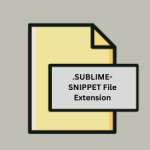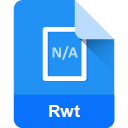.MAILSTATIONERY File Extension

Apple Mail Stationery File
| Developer | Apple |
| Popularity | |
| Category | Page Layout Files |
| Format | .MAILSTATIONERY |
| Cross Platform | Update Soon |
What is an MAILSTATIONERY file?
The .MAILSTATIONERY file extension is associated with Apple Mail, the default email client for macOS and iOS devices.
These files are used specifically for email stationery, allowing users to create visually appealing and customized email templates directly within the Apple Mail application.
This article explores the origins, technical details, advantages, disadvantages, conversion methods, and compatibility of .MAILSTATIONERY files across different operating systems.
More Information.
Apple introduced Mail Stationery alongside Mac OS X Leopard (10.5) in 2007. It was part of a broader effort to integrate richer media and design capabilities into everyday applications.
The initial purpose was to offer users an easy way to create visually impressive emails without needing advanced design skills or external software. This move aimed to set Apple Mail apart by providing a more compelling email experience compared to competitors.
Origin Of This File.
Apple Mail Stationery was introduced as a feature to enhance the visual appeal of emails sent through Apple’s ecosystem.
The idea behind .MAILSTATIONERY files were to provide users with pre-designed templates that could be easily customized with personal content, making email communication more engaging and professional.
These templates range from simple designs suitable for personal emails to more elaborate layouts tailored for business correspondence.
File Structure Technical Specification.
.MAILSTATIONERY files are essentially packages or bundles that contain HTML, CSS, and image files. They are structured to include everything necessary to render the email template correctly within Apple Mail.
This includes background images, text formatting styles, and placeholders for user-inserted content. The structure typically includes:
- HTML Files: Define the structure and content of the email template.
- CSS Stylesheets: Control the visual appearance and layout of the template.
- Images: Backgrounds, headers, and other graphical elements used within the stationery.
The technical specifications ensure compatibility across different versions of Apple Mail and macOS, maintaining consistency in how the stationery templates are rendered and displayed to recipients.
How to Convert the File?
Converting .MAILSTATIONERY files to other formats may not be straightforward due to their specialized structure and purpose.
Users can convert the content of a stationery template into a regular email format by copying and pasting the text and images into a new message in Apple Mail or another email client.
This process preserves the content while losing some of the formatting and layout details specific to the stationery template.
Advantages And Disadvantages.
Advantages:
- Ease of Use: Built-in templates make it easy for users to create visually appealing emails without design expertise.
- Consistency: Ensures that emails sent using stationery appear consistent across devices running Apple Mail.
- Personalization: Templates can be customized with user-provided content, such as text, images, and logos.
- Professionalism: Enhances the professional appearance of emails, especially useful for business communications.
- Integrated Workflow: Seamless integration with Apple Mail’s interface simplifies the process of composing and sending styled emails.
Disadvantages:
- Limited Compatibility: Stationery templates can only be fully utilized within Apple Mail on macOS and iOS devices.
- Complexity in Customization: While templates are customizable, advanced modifications may require knowledge of HTML and CSS.
- File Size: Depending on the complexity of the template, .MAILSTATIONERY files can be larger in size, potentially affecting email load times and storage.
How to Open MAILSTATIONERY?
Open In Windows
Using a Web Browser:
- Some .MAILSTATIONERY files can be previewed or opened in a web browser on Windows. Drag the file into your browser window to see if it displays correctly.
Third-Party Email Clients:
- Some third-party email clients that support HTML templates may offer limited support for .MAILSTATIONERY files. Consider trying applications like Outlook or Thunderbird, though full compatibility is not guaranteed.
Open In Linux
Thunderbird:
- Install Thunderbird email client on Linux, which supports HTML email templates. You can try importing the .MAILSTATIONERY file into Thunderbird to view and use it.
Open In MAC
Apple Mail:
- Double-clicking a .MAILSTATIONERY file in Finder should automatically open it in Apple Mail, where you can use it to compose an email.
Open In Android
Third-Party Email Clients:
- Install an email client on Android that supports HTML email templates. Applications like Gmail or BlueMail may provide limited support for .MAILSTATIONERY files, but functionality may vary.
Open In IOS
Mail App:
- .MAILSTATIONERY files can be accessed and used directly within the Mail app on iOS devices. You may need to download the file from an email or storage service to your device before opening.













